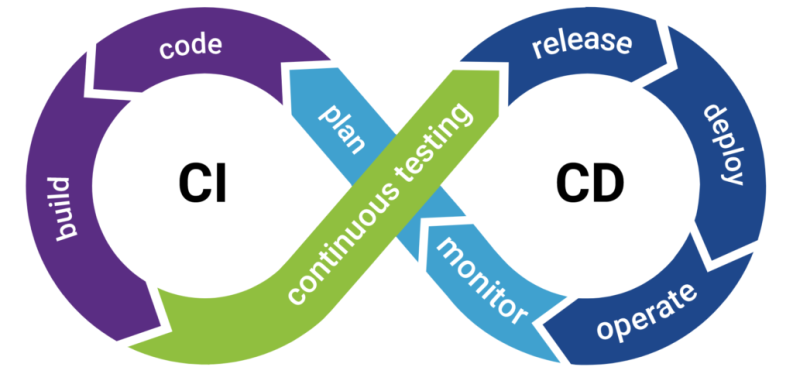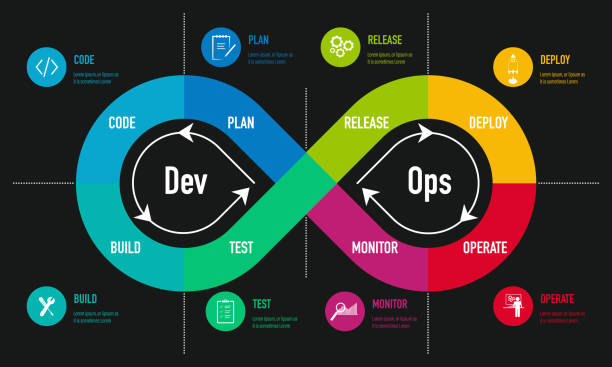
In the software world change is the only constant and there is no dearth of innovations. But innovation can be beneficial only if it is embraced in totality, or else there will be uncomfortable questions to be answered when the projected return on investment (ROI) does not accrue. High-tech equipment and tools must be accompanied by modern methodologies, practices and culture too, if we wish to reap benefits in full measure.
Here’s a simplified analogy to underline the need for holistically embracing innovation. Let’s look at two groups of smartphone users. The first group embraces the smartphone in totality — downloading relevant apps; using necessary clean up tools and practices; adopting the right culture for disciplined usage; choosing the right settings to protect the battery etc.; updating versions; and getting familiar with smartphone usage. This group will reap the immensity of benefits: using it for communication, alarms, reminders, timers, online transactions, spreadsheets, remote CC TV footage reviews, watch movies, listen to music, be influencers on social media etc. Yet another group will buy the very same smartphone but use it only for calling and messaging. Obviously there will be a world of difference in the ROI of the two groups! Moral of the story: Technology, methodology, practices, and culture must go hand in hand, to get the most out of innovation.
Coming to software testing, innovation presents QA professionals with some of the most magnificent testing tools that bring unimaginable speed, accuracy, safety, and security to the testing process. But, as with the smartphone, in order to unlock the immensity of available benefits, it is important to leverage the keys of appropriate methodologies, practices and cultures. So, here’s introducing Agile methodology, CI/CD practice, and DevOps culture – to help you unlock the immensity of software testing innovations.
These modern methodologies and practices encourage a collaborative approach and emphasize continuous development and testing, to ensure continuous improvement, and early detection and fixing of bugs. Thus Agile, CI/CD and DevOps play a vital role in helping apps win the ‘go-to-market’ race; as well as ensuring superior user experience – the two important goalposts for any app.
Let’s review Agile, CI/CD and DevOps through a chart for easier understanding:
|
|
Agile |
CI/CD |
DevOps |
|
Focuses on |
Processes |
Software-defined life cycles |
Culture |
|
Spotlight on |
Transformation |
Tools |
Roles |
|
Motive |
Accelerating Delivery |
Promoting Automation |
Enhancing Responsiveness |
The First Key – Agile Methodology
Agile is a methodology of breaking up the project into several phases with multiple deliverables. It endorses continuous iteration of development and testing throughout the software development life cycle (SDLC). Agile methodology encourages transformation of processes by facilitating concurrent development and testing; regular feedback cycles from all stakeholders including users; and self-organizing and cross-functional teams – all of which help accelerate delivery.
The principle that drives Agile methodology is the focus on removing process barriers – to empower individuals, produce working software rapidly, collaborate closely with customers, and respond to change instead of resisting it.
The great advantage of Agile methodology is that it promotes continual planning, learning, improvement, team collaboration, evolutionary development, and early delivery. This is what makes it the preferred methodology – being able to address the needs of today’s projects where business and technical requirements keep changing as the project progresses. It is no wonder that it has rapidly replaced the less flexible Waterfall methodology where testing would start only after development was completed, thus hugely delaying the project.
The Second Key – CI/CD
(Continuous Integration and Continuous Delivery/Continuous Deployment)

Continuous Testing comprising of CI and CD, is the practice or process of automating testing of software codes throughout the SDLC, making possible early detection and elimination of errors. It permits the commitment of new code modules as they get generated, thus bringing continuity and speed to the software development process. CI/CD presents the platform for teams to work together throughout the development phase, enabling developers to test features and functionalities as they develop, to ensure that their new codes do not negatively impact existing approved functions. Let’s review each component separately for a deeper understanding.
Continuous Integration (CI) is the process of collecting codes of various developers working on a project, and placing them in a common code repository. CI alleviates the challenges of code integration by automating test execution each time a code is integrated. This enables quick feedback to developers, on the acceptance or rejection of their codes.
Continuous Delivery (CD) is the process by which the server gets the new code from the repository, builds it and tests it to check if it can be merged with the rest of the codes. It is the process of keeping the latest build fully updated and ready for deployment.
Continuous Deployment (CD) is the process of sending small, frequent, thoroughly tested changes in the software to the production server. The functioning of the app needs to be scrutinized after every deployment. Automated testing and deployment is important because it helps organizations respond better to market changes.
It’s worth a mention here, that good CI/CD implementation has a direct positive impact on Agile development, since software changes reach production more frequently, facilitating early customer feedback at each update.
The Third Key – DevOps

Devops focuses on culture, highlighting roles that emphasize responsiveness. It seeks to bring in changes in work culture, mindset, and communication – encouraging a co-operative and collaborative approach between Development, Testing, and Operations teams. DevOps is basically an organizational setup that helps all these teams work simultaneously on the app throughout the SDLC.
With developers, testers and operations team working in tandem with each other, they are able to better understand and appreciate each other’s roles, and the problems encountered by the other groups in contributing to the app’s success. Thus DevOps strives to help development, testing and operations teams see eye to eye at every stage of the project. In a good DevOps setup, teams will be cross-functional, thus greatly reducing blame games and delays in the project.
While the best-fit automation framework and tools are a must for the success of DevOps, it must be remembered that the right mindset must precede and accompany the use of these specialized tools, in order to get the best results.
Relationship between Agile, CI/CD, DevOps and Innovation
Agile, CI/CD, and DevOps are the three keys that help unlock the immense treasures that technological software testing innovations offer. Though distinct in their approach, they coincide in their aim of generating excellent software in the shortest possible time. These three keys combine well to make the SDLC robust by promoting continuity, speed, and security throughout the project.
Agile methodology provides the structure for CI/CD and Devops to function well. DevOps is a culture and mindset that encourages Agile principles through collaboration and communication, employing appropriate automated tools to make software development, testing, and release smooth and efficient. CI/CD is a DevOps approach towards using the best-fit automated testing tools, to implement Agile development and testing of software. Together they help organizations unlock the full benefits of innovative testing frameworks and tools – much like the first group of smartphone users in our earlier analogy.
There is no doubt that these three keys must be used in conjunction with the right automated testing framework, for organizations to reap full benefits. Hence BOTm offers you a one stop, automation platform for Mobile App Testing that supports DevOps and Agile, and enhances the CI/CD process.
BOTm is an AI & ML driven, 100% script-less automated Mobile App Testing Platform. It is the accelerator BOT for automated and manual testing of mobile apps, developed for both Android and iOS devices.
Visit botmtesting.com and avail of our Free Trial. Verify the power of our AI and ML driven platform’s error-free mobile app testing, which is the result of our in-built state-of-the-art app testing technologies. Check out our advanced facilities that include audio interaction with Alexa; and our Appium Converter feature which enables you to convert Appium Script Logs into BOTm Script format. With BOTm you are assured of futuristic world class testing solutions to secure your mobile apps, with error-free testing across spectrum.
